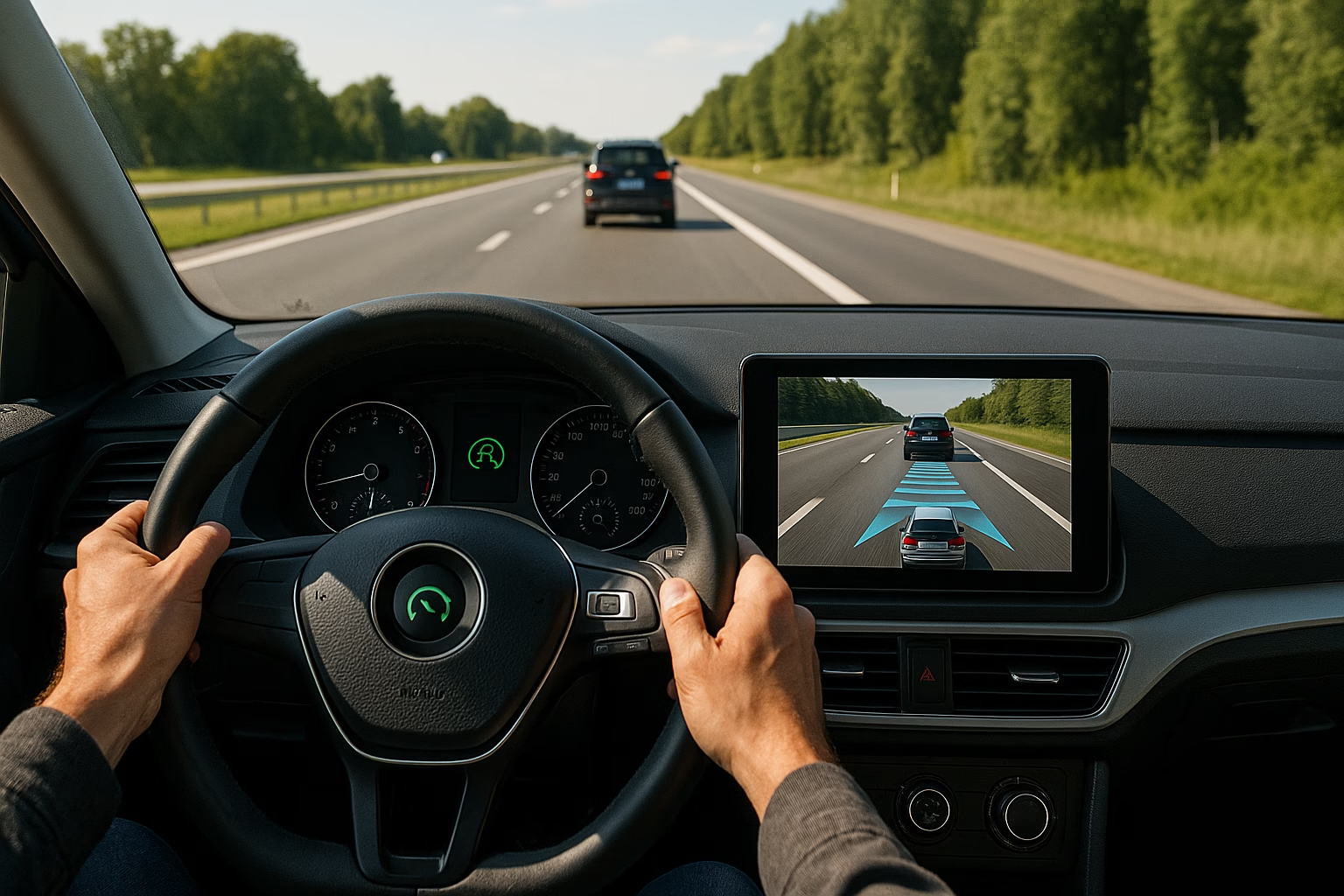Adaptive Cruise Control (ACC) is one of the most convenient driver‑assistance features available today. Building on traditional cruise control, ACC automatically adjusts your speed by sensing the traffic ahead. When a slower vehicle is detected, it reduces your throttle and applies braking to maintain a preset following distance; when the lane clears, it accelerates back to your chosen speed. Used correctly, ACC can make long journeys smoother and reduce fatigue—provided you understand its capabilities and limitations.
How adaptive cruise control works
ACC systems use a combination of radar sensors, forward‑facing cameras or lidar to monitor the road ahead. A radar unit—usually mounted behind the grille or in the bumper—measures the distance and relative speed of the vehicle in front. Some vehicles also use a camera mounted behind the windshield to detect lane markings and stationary objects. The system sends this data to an onboard controller, which adjusts the throttle and applies the brakes to maintain your selected speed and follow distance. Many modern ACC systems offer “stop‑and‑go” capability: they can slow the vehicle to a complete stop in traffic and then accelerate again when the car ahead moves.
Benefits of adaptive cruise control
For highway driving, ACC offers several advantages over standard cruise control. Maintaining a consistent following distance helps reduce tailgating and abrupt braking, which can improve fuel efficiency and reduce wear on your brakes. By automating small speed adjustments, ACC can lessen fatigue on long drives and make heavy traffic less stressful. Some studies also suggest that adaptive cruise smoothing effect reduces traffic wave propagation, potentially improving overall flow.
Limitations and cautions
Despite its benefits, ACC is not a self‑driving system. It does not steer the vehicle, and you remain responsible for monitoring the road and taking control when conditions change. ACC may not recognise stationary vehicles or debris, especially at higher speeds, and may disengage if lane markings are unclear or sensors become blocked. According to the “My Car Does What” safety campaign, drivers should never use ACC in heavy fog or rain, on icy or slippery roads, or when sensors are covered. In these situations the radar cannot accurately detect vehicles ahead and braking distances increase, making it unsafe to rely on automation. The campaign also warns that some ACC systems may not operate in tunnels or underpasses and that drivers should always be ready to brake manually.
When not to use adaptive cruise control
You should deactivate ACC whenever road or weather conditions reduce sensor performance or require frequent speed changes. Examples include:
- Heavy rain, fog, snow or hail that could obscure radar signals or camera lenses.
- Slippery or icy roads where abrupt braking or acceleration could cause a skid.
- Winding mountain roads or steep grades where engine braking and manual control are essential.
- City streets and roundabouts where traffic lights, intersections and pedestrians require constant driver input.
- Construction zones or areas with unclear lane markings, cones or debris.
- Tunnels or covered structures where radar signals may be distorted.
If your vehicle’s sensors are covered by mud, snow, insects or bumper stickers, clean them before using ACC. If you’ve recently had a windscreen or bumper replaced, or if the vehicle has been involved in a collision, have the sensors inspected and recalibrated by a qualified technician.
Tips for safe use
Before using ACC for the first time, read your owner’s manual to learn how your specific system operates and its limitations. Set an appropriate following distance—most systems offer several time‑gap settings; choose a longer gap in heavy traffic or bad weather. Keep your hands on the wheel and remain alert; be prepared to brake or steer at any moment. Avoid resting your foot on the accelerator or brake pedal, but keep it close so you can react quickly if the system disengages. Regularly check that your radar and cameras are clean and unobstructed and avoid applying wax or ceramic coatings over sensor areas. If your car allows you to adjust the sensitivity or acceleration response, choose conservative settings until you’re comfortable with the system’s behaviour.
Brand names and variations
Manufacturers market ACC under different names—Toyota’s Dynamic Radar Cruise Control (DRCC), Subaru’s EyeSight Adaptive Cruise Control, Honda’s Adaptive Cruise Control with Low‑Speed Follow, Ford’s Intelligent Adaptive Cruise Control, Volvo’s Pilot Assist, Hyundai’s Smart Cruise Control and others. While the underlying principles are similar, capabilities vary. Some systems automatically bring the car to a complete stop and resume with a tap of the accelerator; others require the driver to intervene below a certain speed. Understanding the specific features and limitations of your vehicle’s system is essential.
Conclusion
Adaptive Cruise Control can make driving more relaxing and efficient, but it is not a substitute for attentive driving. Treat ACC as an assistant that helps you maintain speed and distance under ideal conditions. Stay engaged, monitor the road ahead and surrounding environment, and be ready to take control whenever conditions change. By understanding how the system works and when not to use it, you can enjoy the benefits of ACC while staying safe on the road.

Hiran Alwis is an automotive lecturer and ADAS specialist with over 15 years of experience in diagnostics, advanced safety systems, and technical training. He founded ADAS Project to help everyday drivers and workshop technicians understand and safely use advanced driver assistance systems.
